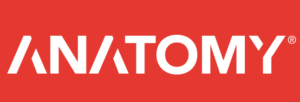Today, ANATOMY released the results of its 2017 “The Young and The Brandless” report, which provides an in-depth look at the media consumption, content discovery habits and network brand recognition capabilities of young (18-26) adults. Based on a comprehensive survey of over 3,100 young millennials and an analysis of screen based consumer touchpoints, the report examines how these three behaviors are linked and the impact they have on both broadcast and over the top (OTT) networks.
Building awareness of the network brand behind programming is extremely important to both broadcast and OTT networks because strong brands are leveraged as a curatorial tool by viewers, which in turn, helps build awareness of new programs and facilitates critical program discovery. However, networks are finding this to be an increasing challenge.
The report indicates that young millennials who watch primarily on TV sets are, on average, better than desktop and mobile viewers at connecting broadcast program brands to network brands. The cause for concern for broadcast networks is, however, that 50% of young millennials watch exclusively on desktop or mobile devices. Furthermore, linear viewership is declining year over year, while desktop and mobile viewing is growing year over year. In order to future proof a network brand, it is critical for networks to improve their promotion in non-linear digital spaces.
At the same time, while the survey shows that young millennials who watch primarily on desktop and mobile platforms are, on average, better than TV viewers at connecting OTT program brands to their related network brands – with the notable exception of Netflix – the overall brand awareness of these OTT networks lags behind that of the broadcast networks. Without the benefit of broadcast TV, OTT services have less room for error in their non-linear digital promotion efforts. Without a secure level of brand relevance among young viewers, outlets such as Amazon and Hulu are going to find it challenging to achieve their ambitions.
“Our study looked at young millennial consumption, discovery and brand recall habits and the impact those behaviors have on a network’s brand whether it be traditional TV or OTT. What is interesting is that while networks consistently indicate that the viewer is at the center of their thinking, they don’t seem to actually analyze how users truly behave,” said Gabriella Mirabelli, CEO, ANATOMY. “We have learned that on-air promotion is still the most effective means of building brand awareness between a broadcast network’s programming and their brand. As for OTT – outside of Netflix – there is also work to be done as their promotional efforts need to be more precise in order to be effective.”
Key millennial viewership trends highlighted in the study include:
- The most common way for young millennials to consume television content (71%) is OTT platforms with one in two watching entertainment exclusively on desktop or mobile devices.
- 58% of young millennials learn of new programming directly through friends and family or on social media. Young millennials are less likely to recall advertising as a consequential factor in discovering new TV programs.
- In an aided brand recognition survey, Netflix yielded the highest brand awareness scores in comparison to other OTT platforms and broadcast networks. 65% of young millennials matched Netflix programs to the Netflix brand, while in contrast only 31% of young millennials matched ABC, CBS, and NBC programs to their respective brands. Amazon programs were only linked with Amazon 20% of the time and Hulu came in at just 15%.
- Brand awareness scores are positively correlated with screen touchpoint rankings. ANATOMY analyzed broadcast and OTT network brands across six dimensions (on-air promotion, web, mobile, SEO, Facebook, and digital ads) in order to rank each brand’s performance. Netflix yielded the highest screen touchpoint ranking and brand awareness score.
- Facebook engagement is strongly correlated with higher brand awareness scores. A data mining analysis assessed Facebook activity among broadcast networks and OTT platforms. Higher Facebook engagement on branded posts strongly correlated with higher brand awareness scores.
- The 12 – 3pm ET timeframe generates 236% more engagements on Facebook than other publishing windows. Meaning, on average, posts published during this window generated twice as much engagement than posts published at other times of day.
- A SEO analysis found that piracy results are as common as network results when trying to find TV online through a search query. In ANATOMY’s assessment, 43% of links on first search engine results pages (SERP) were network-based links, while 42% of links were piracy-based links. Search engines are a key pathway to pirate TV content, especially for young millennials. To beat piracy, TV networks must master the first SERP for popular show-related search queries.

